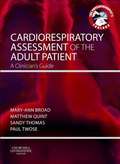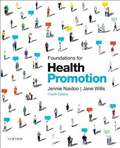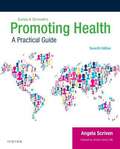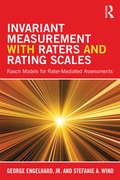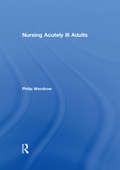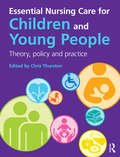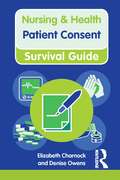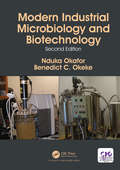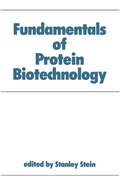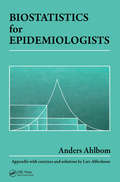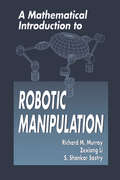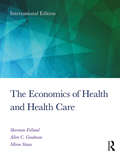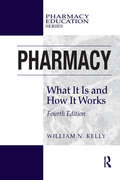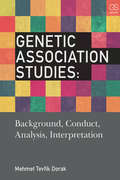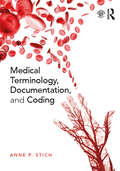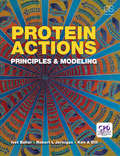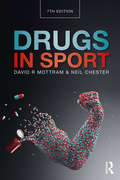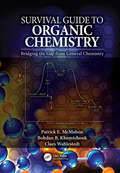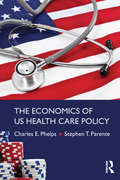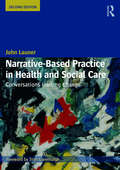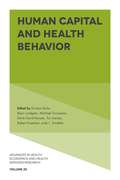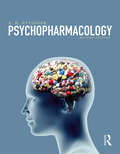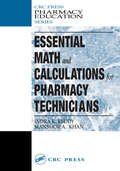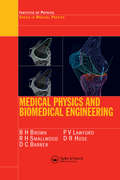- Table View
- List View
Cardiorespiratory Assessment Of The Adult Patient: A Clinician's Guide (Physiotherapist's Tool Box Series (PDF))
by Mary Ann Broad Paul Twose Matthew Quint Sandy ThomasThis new innovative resource aims to give physiotherapy students and those new to respiratory care a simple, easy-to-use guide to the process and procedures used in the assessment of adult respiratory patients. Cardiorespiratory Assessment of the Adult Patient begins by identifying the scope of respiratory physiotherapy and listing some key aims of assessment with an overview of different approaches. It then goes on to provide a selection of 'assessment checklists' for the main clinical settings which the physiotherapist is likely to encounter. Chapter 3 provides a selection of 'assessment tools' given alphabetically, including those that physiotherapists may be expected to carry out themselves and those where they only need to interpret the assessment findings. These tools include a systematic guide to the procedure involved (where relevant) and an explanation of the key findings and their significance for the physiotherapist. In the final section, individuals can apply their knowledge using case scenarios and suggested solutions are also provided.
Foundations For Health Promotion (Public Health And Health Promotion Series)
by Jennie Naidoo Jane WillsThe fourth edition of Foundations for Health Promotion continues to offer a wealth of information in a friendly, easy-to-read format. This edition has been comprehensively updated and includes a new feature of learning activities with indicative answers to help students and practitioners to reflect on their practice. 'Pull out' boxes of case studies and examples help the reader to identify the evidence base for health promotion and illustrate the range of health promotion practice. Divided into four parts, the book first explains the theoretical concepts of health, health education and health promotion and the ethical and political aspects of practice. The second part explores strategies to promote health and some of the dilemmas that they pose. The third part explores how a range of different settings, such as hospitals and schools, can be oriented towards positive health and well-being. The fourth part focuses on the implementation of health promotion interventions and is designed to help practitioners to reflect on their practice by examining what drives their choice of strategy. Foundations for Health Promotion, Fourth Edition will be ideal for a range of disciplines including health service professionals in primary and acute settings, those working in local and municipal authorities to promote health and wellbeing, health educators and trainers. Comprehensive updating and expansion to reflect recent research findings and major organizational and policy changes Clear structure and signposting for ease of reading and study Wide choice of examples and illustrative case studies reflect the needs of a variety of professional groups in health services, local and municipal services and education Ineractive learning activities with indicative answers help readers consolidate their learning Comprehensively updated and expanded to reflect major organizational and policy changes Interactive learning activities with indicative answers at the end of each chapter 'Pull out' boxes illustrate recent research findings and case studies of practice
Promoting Health - A Practical Guide: (Ewles And Simnett) (PDF)
by Angela ScrivenRetaining the features that characterized the phenomenal success of previous editions - namely, authority, accessibility and a user-friendly style - the latest edition of Ewles & Simnett's Promoting Health: A Practical Guide, continues to offer readers with a sound introduction to the theory and practice of promoting public health. Organised into three parts, the first section, 'Thinking About Health, Health Promotion and Public Health', explains what health, health promotion, public health and health education entail. The second part, 'Planning and Managing Health Promotion and Public Health Practice' focuses on the health promoter's daily work, beginning with a basic planning and evaluation framework followed by a discussion of how to identify and assess needs and priorities. The final part of the book, 'Competence in Health Promotion and Public Health Practice', examines how readers can develop their competence in carrying out a range of activities, including enabling clients to learn in one-to-one and group settings, working with communities and changing policies and practices. Fully updated throughout by a renowned author, the latest edition of this classic book includes the latest research on the comparative effectiveness of different approaches to health promotion and public health practice, and explores the development of public health communication strategies, including social marketing, social media campaigns, and use of pressure groups and 'nudging'. The book also highlights the latest thinking on a wide variety of topics to ensure relevance to a broad array of practitioners working across differing settings. Richly endowed with a wide range of interactive exercises and helpful case studies, Ewles & Simnett's Promoting Health: A Practical Guide, seventh edition, will be ideal for anyone involved with health promotion and public health wherever they are based.
Invariant Measurement with Raters and Rating Scales: Rasch Models for Rater-Mediated Assessments
by George Engelhard Jr. Stefanie WindThe purpose of this book is to present methods for developing, evaluating and maintaining rater-mediated assessment systems. Rater-mediated assessments involve ratings that are assigned by raters to persons responding to constructed-response items (e.g., written essays and teacher portfolios) and other types of performance assessments. This book addresses the following topics: (1) introduction to the principles of invariant measurement, (2) application of the principles of invariant measurement to rater-mediated assessments, (3) description of the lens model for rater judgments, (4) integration of principles of invariant measurement with the lens model of cognitive processes of raters, (5) illustration of substantive and psychometric issues related to rater-mediated assessments in terms of validity, reliability, and fairness, and (6) discussion of theoretical and practical issues related to rater-mediated assessment systems. Invariant measurement is fast becoming the dominant paradigm for assessment systems around the world, and this book provides an invaluable resource for graduate students, measurement practitioners, substantive theorists in the human sciences, and other individuals interested in invariant measurement when judgments are obtained with rating scales.
Nursing Acutely Ill Adults
by Philip WoodrowThis comprehensive and clinically-focused textbook is designed for student and qualified nurses concerned with caring effectively for deteriorating and acutely ill adults outside of specialist intensive care units. Divided into six sections, the book begins with chapters on assessment and the deteriorating patient, including monitoring vital signs and interpreting blood results. This is followed by two sections focusing on breathing and cardiovascular problems respectively. Section 4 explores issues around disability and impairment, including chapters on neurology, pain management, psychological needs and thermoregulation. The penultimate section looks at maintaining the internal environment, with chapters on issues such as nutrition, fluid management and infection control. The text ends with a discussion of legal issues and accountability. Nursing Acutely Ill Adults includes a full range of pedagogical features, including sections: identifying fundamental knowledge; highlighting implications for practice; giving further reading and resources; using case scenarios to help readers relate theory to practice; and providing ‘time out’ exercises. It is the ideal textbook for students taking modules in caring for critically ill adults and qualified nurses working with these patients.
Essential Nursing Care for Children and Young People: Theory, Policy and Practice
by Chris ThurstonEssential Nursing Care for Children and Young People is the definitive guide for all nursing and healthcare students and professionals caring for children and young people. Designed to meet the 2010 NMC competency standards for pre-registration nurses, the textbook supports you through the process of caring for children and young people with varied needs and conditions across all healthcare settings. A practical, patient-centred approach is taken throughout, with the ‘voices’ of children, their families and their carers used to tie theoretical knowledge to the real experience of providing care. The inclusion of the latest research and health and social care policies ensures that you are fully in line with the latest clinical practice, whilst the book’s activities and exercises allow you to regularly check your understanding and develop confidence during your journey from student to nursing professional. Main features: Course-Focused Approach – pedagogy and content designed specifically for all three years of the child nursing degree programme. Contemporary Content – research note features and policy integrated throughout to give you instant access to the latest evidence-based practice. Illustrated Throughout – this highly accessible text regularly uses pictures and diagrams to highlight key issues. Voices – include authentic experiences of children, young people, parents, carers and professionals to help develop a patient-focused attitude to care. Pertinent A&P – includes coverage of all relevant anatomy and physiology for child and young person nursing courses. Practice Guidelines – provide practical guidance on everyday procedures for your quick reference. Activities and Answers – allow you to check your knowledge and build confidence. Specialist Authors – each chapter is written by leading experts in each area. Essential Nursing Care for Children and Young People is the ideal main textbook for all undergraduate child and young person nursing students, as well as professionals wanting to ensure they are using the latest practice. This text is also relevant to any student or professional involved in the health and social care of children and young adults.
Essential Nursing Care for Children and Young People: Theory, Policy and Practice
by Chris ThurstonEssential Nursing Care for Children and Young People is the definitive guide for all nursing and healthcare students and professionals caring for children and young people. Designed to meet the 2010 NMC competency standards for pre-registration nurses, the textbook supports you through the process of caring for children and young people with varied needs and conditions across all healthcare settings. A practical, patient-centred approach is taken throughout, with the ‘voices’ of children, their families and their carers used to tie theoretical knowledge to the real experience of providing care. The inclusion of the latest research and health and social care policies ensures that you are fully in line with the latest clinical practice, whilst the book’s activities and exercises allow you to regularly check your understanding and develop confidence during your journey from student to nursing professional. Main features: Course-Focused Approach – pedagogy and content designed specifically for all three years of the child nursing degree programme. Contemporary Content – research note features and policy integrated throughout to give you instant access to the latest evidence-based practice. Illustrated Throughout – this highly accessible text regularly uses pictures and diagrams to highlight key issues. Voices – include authentic experiences of children, young people, parents, carers and professionals to help develop a patient-focused attitude to care. Pertinent A&P – includes coverage of all relevant anatomy and physiology for child and young person nursing courses. Practice Guidelines – provide practical guidance on everyday procedures for your quick reference. Activities and Answers – allow you to check your knowledge and build confidence. Specialist Authors – each chapter is written by leading experts in each area. Essential Nursing Care for Children and Young People is the ideal main textbook for all undergraduate child and young person nursing students, as well as professionals wanting to ensure they are using the latest practice. This text is also relevant to any student or professional involved in the health and social care of children and young adults.
Patient Consent (Nursing and Health Survival Guides)
by Elizabeth Charnock Denise OwensIdeal for quick reference, this pocket-sized (120x80mm), spiral-bound book in the popular Nursing & Health Survival Guide series puts all the crucial information about patient consent at your fingertips. There is an obligation for practitioners to obtain valid consent from their patients before examination, routine personal care or therapeutic treatment. However, the law relating to consent is complex. Situations may arise where a patient requires urgent treatment, yet is either unwilling or unable to give their consent, or there are concerns over the form and context of the consent. All you need to know on: the underlying principles of consent; consent and the adult patient; consent and the adult who lacks capacity; children and consent; young people and consent.
Modern Industrial Microbiology and Biotechnology
by Nduka Okafor Benedict C. OkekeThe field of industrial microbiology involves a thorough knowledge of the microbial physiology behind the processes in the large-scale, profit-oriented production of microbe-related goods which are the subject of the field. In recent times a paradigm shift has occurred, and a molecular understanding of the various processes by which plants, animals and microorganisms are manipulated is now central to industrial microbiology. Thus the various applications of industrial microbiology are covered broadly, with emphasis on the physiological and genomic principles behind these applications. Relevance of the new elements such as bioinformatics, genomics, proteomics, site-directed mutation and metabolic engineering, which have necessitated the paradigm shift in industrial microbiology are discussed.
Fundamentals of Protein Biotechnology
by SteinFills a gap between the existing studies of proteins, which tend to be highly technical and geared toward the practicing protein chemist, and biochemistry textbooks, which focus on general principles. Scientists cover a dozen topics by presenting fundamental principles, an overview, and the practica
Biostatistics for Epidemiologists
by Anders AhlbomBiostatistics for Epidemiologists is a unique book that provides a collection of methods that can be used to analyze data in most epidemiological studies. It examines the theoretical background of the methods described and discusses general principles that apply to the analysis of epidemiological data. Specific topics addressed include statistical interference in epidemiological research, important methods used for analyzing epidemiological data, multivariate models, dose-response analysis, analysis of the interaction between causes of disease, meta-analysis, and computer programs. Biostatistics for Epidemiologists will be a useful guide for all epidemiologists and public health professionals who rely on biostatistical data in their work.
A Mathematical Introduction to Robotic Manipulation
by Richard M. Murray Zexiang Li S. Shankar SastryA Mathematical Introduction to Robotic Manipulation presents a mathematical formulation of the kinematics, dynamics, and control of robot manipulators. It uses an elegant set of mathematical tools that emphasizes the geometry of robot motion and allows a large class of robotic manipulation problems to be analyzed within a unified framework. The foundation of the book is a derivation of robot kinematics using the product of the exponentials formula. The authors explore the kinematics of open-chain manipulators and multifingered robot hands, present an analysis of the dynamics and control of robot systems, discuss the specification and control of internal forces and internal motions, and address the implications of the nonholonomic nature of rolling contact are addressed, as well. The wealth of information, numerous examples, and exercises make A Mathematical Introduction to Robotic Manipulation valuable as both a reference for robotics researchers and a text for students in advanced robotics courses.
The Economics of Health and Health Care: International Student Edition, 8th Edition
by Sherman Folland Allen Charles Goodman Miron StanoFolland, Goodman, and Stano’s bestselling The Economics of Health and Health Care text offers the market-leading overview of all aspects of Health Economics, teaching through core economic themes, rather than concepts unique to the health care economy. The Eighth Edition of this key textbook has been revised and updated throughout, and reflects changes since the implementation of the Affordable Care Act (ACA). In addition to its revised treatment of health insurance, the text also introduces the key literature on social capital as it applies to individual and public health, as well as looking at public health initiatives relating to population health and economic equity, and comparing numerous policies across Western countries, China, and the developing world. It provides up-to-date discussions on current issues, as well as a comprehensive bibliography with over 1,100 references. Extra material and teaching resources are now also available through the brand new companion website, which provides full sets of discussion questions, exercises, presentation slides, and a test bank. This book demonstrates the multiplicity of ways in which economists analyze the health care system, and is suitable for courses in Health Economics, Health Policy/Systems, or Public Health, taken by health services students or practitioners.
Pharmacy: What It Is and How It Works (Pharmacy Education Series)
by William N. KellyNow fully updated for its fourth edition, Pharmacy: What It Is and How It Works continues to provide a comprehensive review of all aspects of pharmacy, from the various roles, pathways and settings of pharmacists to information about how pharmacy works within the broader health care system. Beginning with a brief historical perspective on the field, the book discusses the many facets of the pharmacy profession. It describes the role of pharmacists in different settings and provides information ranging from licensing requirements to working conditions, highlighting the critical role of pharmacists within the health care system. The author examines the drug use process with sections on distribution, prescribing, dispensing, and pricing. He also discusses the role of pharmacy support personnel. A chapter on informatics explores how pharmacy has evolved through information technology and automation. Additional chapters cover poison control, pharmaceutical care, pharmacy organizations, the drug approval process, and career development. Designed for classroom and professional use, the book contains numerous tools to facilitate comprehension, including: Learning objectives to help readers focus on the goals of each chapter Informative tables and figures summarizing data Summary paragraphs tying in salient points Discussion questions and exercises to test assimilation "Challenges" which place the material in broader context Websites and references to encourage further study This valuable text provides a look into the profession that is both broad and deep, supplying a one-stop introduction to a promising career in pharmacy.
Genetic Association Studies: Background, Conduct, Analysis, Interpretation
by Mehmet Tevfik DorakGenetic Association Studies is designed for students of public health, epidemiology, and the health sciecnes, covering the main principles of molecular genetics, population genetics, medical genetics, epidemiology and statistics. It presents a balanced view of genetic associations with coverage of candidate gene studies as well as genome-wide association studies. All aspects of a genetic association study are included, from the lab to analysis and interpretation of results, but also bioinformatics approaches to causality assessment. The role of the environment in genetic disease is also highlighted. Genetic Association Studies will enable readers to understand and critique genetic association studies and set them on the way to designing, executing, analyzing, interpreting, and reporting their own.
Medical Terminology, Documentation, and Coding
by Anne P. StichGiving students the strongest possible baseline in medical terminology, along with the how and why it is used in documentation and basic coding, this is a vital text for all students taking courses in the area. It allows readers to use their knowledge immediately in any medical setting (including being a patient), in their workplaces, and in the journey to future careers. Using a body systems approach to medical terminology, this textbook supports students to: Recognize words by constructing medical terms based on root words, prefixes, linking forms, and suffixes. Define, spell, pronounce, and use medical terms, acronyms, and abbreviations in the context of patient care with appropriate documentation and coding examples. Identify anatomical directions, fundamental anatomical terminology, basic physiologic functions, and common pathology of all major organ systems with related medical investigation tools, procedures, and pharmaceuticals. Relate the use of medical language and medical record-keeping to the SOAP format, common medical reports, and coding tools, along with their impact on patient care. Accompanied by plentiful color illustrations and activities, as well as a companion website with resources for both instructors and students, this is a fresh and readable textbook.
Protein Actions: Principles and Modeling
by Ken Dill Robert L. Jernigan Ivet BaharProtein Actions: Principles and Modeling is aimed at graduates, advanced undergraduates, and any professional who seeks an introduction to the biological, chemical, and physical properties of proteins. Broadly accessible to biophysicists and biochemists, it will be particularly useful to student and professional structural biologists and molecular biophysicists, bioinformaticians and computational biologists, biological chemists (particularly drug designers) and molecular bioengineers. The book begins by introducing the basic principles of protein structure and function. Some readers will be familiar with aspects of this, but the authors build up a more quantitative approach than their competitors. Emphasizing concepts and theory rather than experimental techniques, the book shows how proteins can be analyzed using the disciplines of elementary statistical mechanics, energetics, and kinetics. These chapters illuminate how proteins attain biologically active states and the properties of those states. The book ends with a synopsis the roles of computational biology and bioinformatics in protein science.
Drugs in Sport
by David R. Mottram Neil ChesterDrugs in Sport is the most comprehensive and accurate text on the emotive, complex and critical subject of doping and illegal performance enhancement in sport. Thoroughly updated in light of the latest World Anti-Doping Code and taking into account the latest regulations, methods and landmark cases, this seventh edition explores the science behind drug-use in sport, as well as its ethical, social, political and administrative context. Introducing an increased focus on inadvertent doping, athlete-support personnel as key stakeholders in the doping process, societal drug-use, and the role of national governing bodies and anti-doping organisations, the book covers key topics including: an assessment of the prevalence of drug-taking in sport the latest doping control regulations stipulated by the World Anti-Doping Agency (WADA) the science and side effects of each major class of drug used in sport cutting-edge issues such as gene doping and biological passports issues surrounding legal substances and ergogenic aids in supplements medical and pharmaceutical services at major sporting events Accessibly written, and supported throughout with illustrative case studies and data, Drugs in Sport provides a crucial and objective resource for students and researchers, athletes, sports scientists, coaches and athlete-support staff, journalists, sports administrators and policymakers, alike.
Survival Guide to Organic Chemistry: Bridging the Gap from General Chemistry
by Patrick E. McMahon Bohdan B. Khomtchouk Claes WahlestedtThe Survival Guide to Organic Chemistry: Bridging the Gap from General Chemistry enables organic chemistry students to bridge the gap between general chemistry and organic chemistry. It makes sense of the myriad of in-depth concepts of organic chemistry, without overwhelming them in the necessary detail often given in a complete organic chemistry text. Here, the topics covered span the entire standard organic chemistry curriculum. The authors describe subjects which require further explanation, offer alternate viewpoints for understanding and provide hands-on practical problems and solutions to help master the material. This text ultimately allows students to apply key ideas from their general chemistry curriculum to key concepts in organic chemistry.
The Economics of US Health Care Policy
by Charles E. Phelps Stephen T. ParenteIn this book, Phelps and Parente explore the US health care system and set out the case for its reform. They trace the foundations of today’s system, and show how distortions in the incentives facing participants in the health care market could be corrected in order to achieve lower costs, a higher quality of care, a higher level of patient safety, and a more efficient allocation of health care resources. Phelps and Parente propose novel yet economically robust changes to US tax law affecting health insurance coverage and related issues. They also discuss a series of specific improvements to Medicare and Medicaid, and assess potential innovations that affect all of health care, including chronic disease management, fraud and abuse detection, information technology, and other key issues. The Economics of US Health Care Policy will be illuminating reading for anyone with an interest in health policy, and will be a valuable supplementary text for courses in health economics and health policy, including for students without advanced training in economics.
Narrative-Based Practice in Health and Social Care: Conversations Inviting Change
by John LaunerNarrative-Based Practice in Health and Social Care outlines a vision of how witnessing narratives, paying attention to them, and developing an ability to question them creatively, can make the person’s emerging story the central focus of health and social care, and of healing. This text gives an account of the practical application of ideas and skills from contemporary narrative studies to health and social care. Promoting narrative-based practice in everyday encounters with patients and clients, and in supervision, teaching, teamwork and management, it presents "Conversations Inviting Change," an established narrative-based model of interactional skills. Underpinned by an account of theory from narrative studies and related fields, including communication theory and systems thinking, it is written for students and practitioners across a broad range of professions in primary and secondary health care and social care. More information about "Conversations Inviting Change" is available at www.conversationsinvitingchange.com. This website includes podcasts, presentations and further teaching material as well as details of forthcoming courses, and is continually updated with information about the approach described in this book.
Human Capital and Health Behavior (Advances in Health Economics and Health Services Research #25)
by Kristian Bolin Björn Lindgren Michael Grossman Dorte Gyrd-Hansen Tor Iversen Dr Robert Kaestner Dr Jody SindelarHuman capital is embodied in human beings. It embraces the individual’s capacity to perform and enjoy activities that provide money and/or psychic income. Health behaviour affects human capital and is itself affected by the individual’s human capital. This volume consists of original theoretical and empirical contributions to our knowledge of the interdependence between Human Capital and Health Behaviour.
Psychopharmacology
by R. H. EttingerWith increases in the prevalence of psychiatric and behavioral disorders and rapid advances in the development of new drug therapies, there is an increasing need to present the science behind these developments. Students and educators are often confronted with conflicting and exaggerated claims about the effectiveness of drugs. As recently as ten years ago, the mechanisms of action of many medications prescribed for common psychological disorders were not well understood, even by the scientists developing them. Now, drug treatment has advanced to a stage where drugs are designed for their effects on specific receptors, membrane proteins, or secondary messengers within particular cells in the brain. This text introduces a sufficient background in neuroanatomy and physiology so students can comprehend the necessary details of drug action. Psychopharmacology, Second Edition, presents its subject matter in the context of the behavioral disorders they are designed to treat, rather than by traditional drug classifications. Students are often familiar with the major diagnostic categories, so presenting psychopharmacology as it pertains to these familiar disorders strengthens their understanding of the physiology and neurochemistry underlying them as well as the approaches to their treatment. Each disorder is discussed from a historical context along with diagnostic criteria and descriptions of typical cases. In addition, what we presently know about the underlying pathology of each disorder is carefully described. A critical examination of drug claims is missing from most psychopharmacology texts, but is offered here. Students will read about the most current research available from a critical perspective. When alternatives to traditional drug therapies are supported by research, these studies are presented as well. Throughout, this text discusses how drug effectiveness is measured in both human and animal studies. Psychopharmacology has contributed significantly over the past 75 years to the treatment of severe psychological disorders as well as to our understanding of the brain and human behavior. This symbiotic relationship between psychopharmacology and the neural and behavioral sciences will continue long into the future. This fully updated second edition is ideal for undergraduate and pre-professional students, and includes a robust companion website.
Essential Math and Calculations for Pharmacy Technicians (Pharmacy Education Series)
by Mansoor A. Khan Indra K. ReddyAccurately calculating medication dosages is a critical element in pharmaceutical care that directly affects optimal patient outcomes. Unfortunately, medication dosage errors happen in pharmacies, in hospitals, or even at home or in homecare settings everyday. In extreme cases, even minor dosage errors can have dire consequences. Careful calculations are essential to providing optimal medical and pharmaceutical care. Essential Math and Calculations for Pharmacy Technicians fills the need for a basic reference that students and professionals can use to help them understand and perform accurate calculations. Organized in a natural progression from the basic to the complex, the book includes:Roman and Arabic NumeralsFractions and decimalsRatios, proportions, and percentagesSystems of measurement including household conversionsInterpretation of medication ordersIsotonicity, pH, buffers, and reconstitutionsIntravenous flow ratesInsulin and Heparin productsPediatric dosageBusiness mathPacked with numerous solved examples and practice problems, the book presents the math in a step-by-step style that allows readers to quickly grasp concepts. The authors explain the fundamentals simply and clearly and include ample practice problems that help readers become proficient. The focus on critical thinking, real-life problem scenarios, and the self-test format make Essential Math and Calculations for Pharmacy Technicians an indispensable learning tool.
Medical Physics and Biomedical Engineering (Series in Medical Physics and Biomedical Engineering)
by B. H Brown R. H Smallwood D. C. Barber P. V Lawford D. R HoseMedical Physics and Biomedical Engineering provides broad coverage appropriate for senior undergraduates and graduates in medical physics and biomedical engineering. Divided into two parts, the first part presents the underlying physics, electronics, anatomy, and physiology and the second part addresses practical applications. The structured approach means that later chapters build and broaden the material introduced in the opening chapters; for example, students can read chapters covering the introductory science of an area and then study the practical application of the topic. Coverage includes biomechanics; ionizing and nonionizing radiation and measurements; image formation techniques, processing, and analysis; safety issues; biomedical devices; mathematical and statistical techniques; physiological signals and responses; and respiratory and cardiovascular function and measurement. Where necessary, the authors provide references to the mathematical background and keep detailed derivations to a minimum. They give comprehensive references to junior undergraduate texts in physics, electronics, and life sciences in the bibliographies at the end of each chapter.
